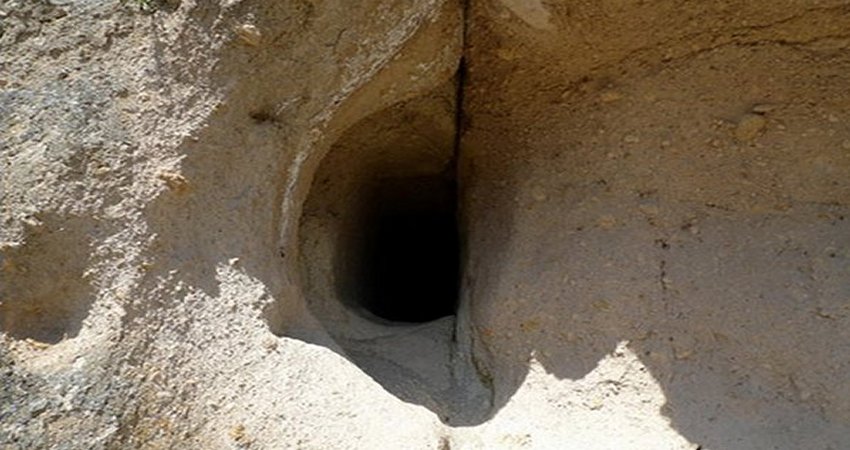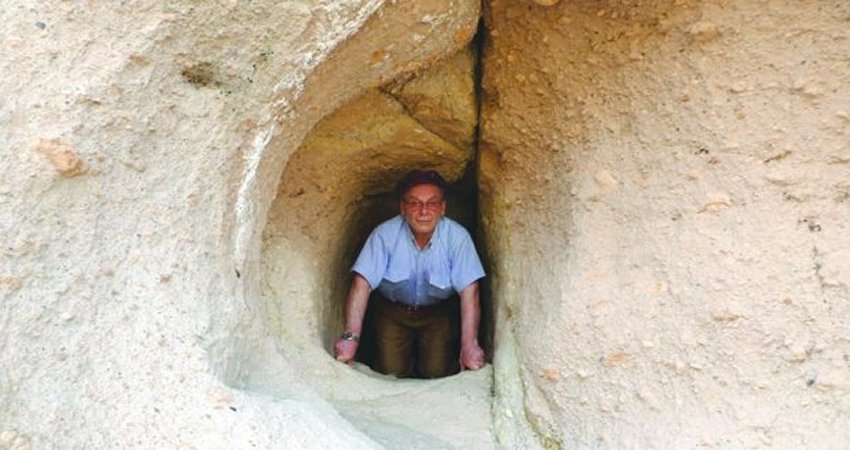MessageToEagle.com – Archaeologists have discovered previously unknown secret water channels, mysterious monk cells, meditation rooms, huge corridors, intricate tunnels, traps and corners under the ruins of the ancient 5,000-year-old Armenian city of Ani.
Located on a hilltop near the bank of the Akhuryan River, Ani, on the Turkish-Armenian border in the eastern province of Kars this ancient city is now gaining attention since no previous publications on the underground structures had been mentioned before.
At its height, Ani had a population of 100,000–200,000 people and was the rival of Constantinople, Baghdad and Damascus. Long ago renowned for its splendor and magnificence, Ani was abandoned and largely forgotten in the sixteenth and seventeenth centuries.
“In 2011 while working on a United Nations project in order to promote Kars and to reveal its historical and cultural heritage, I came across some pretty interesting information.

One of the most important names of the first half of the 20th century, George Ivanovic Gurdjieff, who spent most of his childhood and youth in Kars, had chosen [to stay in] an isolated place in Ani along with his friend Pogosyan where they worked for some time together in the 1880s.
One day, while digging at one of the underground tunnels in Ani, Gurdjieff and his friend saw that the soil became different.
They continued digging and discovered a narrow tunnel. But the end of the tunnel was closed off with stones.
They cleaned the stones and found a room.
They saw decayed furniture, broken pots and pans in the room. They also found a scrap of parchment in a niche.
Although Gurdjieff spoke Armenian very well, he failed to read Armenian writing in the parchment. Apparently, it was very old Armenian. After a while, they learned that the parchments were letters written by a monk to another monk,” says history researcher Sezai Yazıcı who became interested in these fascinating underground structures.
“Finally, [Gurdjieff and his friend] succeeded in understanding the letters. Gurdjieff discovered that there was a famous Mesopotamian esoteric school in the place where they found the letters. The famous school was active between the sixth and seventh centuries A.D. and there was a monastery there,” he added.
According to Yazıcı, Gurdjieff was the first person to mention the monastery that was located under the Ani Ruins.
Gurdjieff recorded his discovery in a journal. He writes:
We were especially interested in one letter in which the writer referred to information he had received concerning certain mysteries….Towards the end, one passage particularly attracted our attention.
It said: ‘Our worthy Father Telvant has at last succeeded in learning the truth about the Sarmoung Brotherhood.
Their organisation actually did exist near the town of Siranoush, and fifty years ago, soon after the migration of peoples, they also migrated and settled in the valley of Izrumin, three days journey from Nivssi….’ Then the letter went on about other matters. What struck us most was the word “Sarmoung”, which we had come across several times in the book called “Merkhavat”. This word is the name of a famous esoteric school which, according to tradition, was founded in Babylon as far back as 2500 BC, and which was known to have existed somewhere in Mesopotamia up to the sixth or seventh century AD; but about its further existence one could not obtain anywhere the least information.
This school was said to have possessed great knowledge, containing the key to many secret mysteries.”
“Gurdjieff’s discovery, nearly 135 years ago, could not have been confirmed until the excavation works of 1915. Years later, an Italian excavation team confirmed that it was a monastery. Before Gurdjieff, many travelers also observed that a significant population had lived in caves or rock houses in Ani,” he said.
“The tunnels are above 500 meters in Ani. Most of underground structures and caves were used as houses. The metrical sizes of most of the underground structures have been measured and maps have been made for most of them,” the researcher said, confirming that there were currently 823 underground structures and caves in Ani today.
Yazıcı said among the most important underground structures were the Giden Gelmez Tunnel, Yeraltı Anisi (Underground Ani) and Gizli Kap?lar (Secret Doors). “On the other hand, Ani also has four complicated structures. It is very difficult to reach some of them.
It is time to mention these underground structures in the promotion of Ani. The Culture and Tourism Ministry should put signs showing the places of underground structures and build walking paths. Underground structures draw great interest in the world,” Yazıcı said.
It should be added that there can still be many more undiscovered underground structures beneath this ancient city.
© MessageToEagle.com







